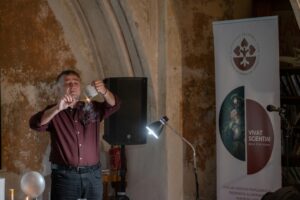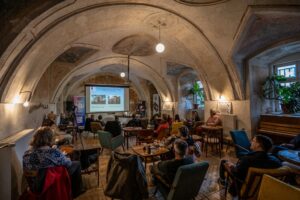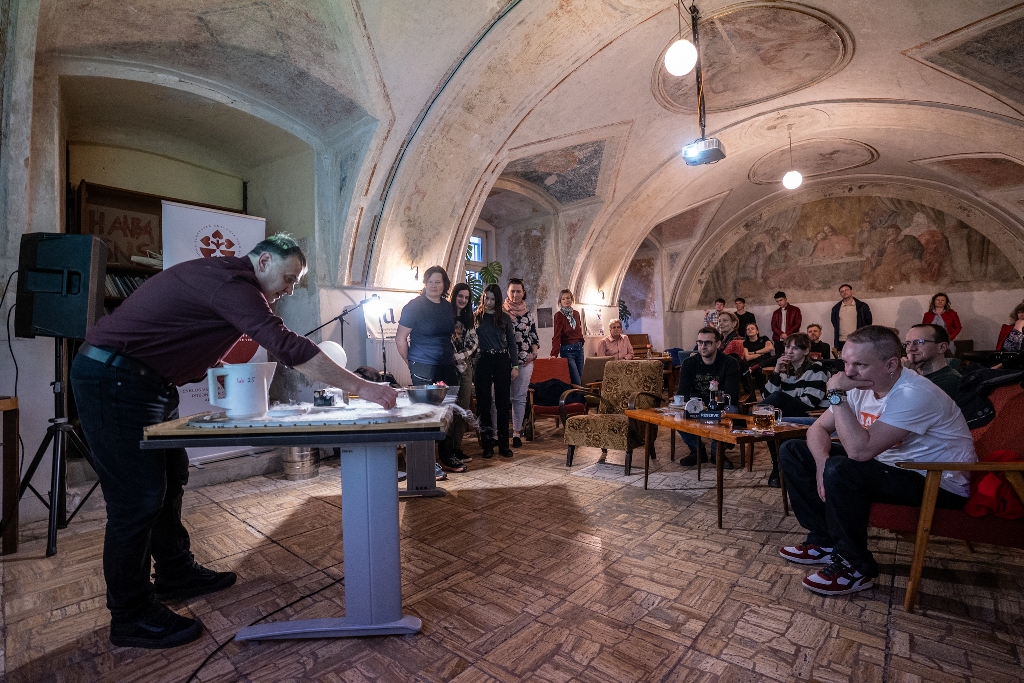“The behavior of matter at very low temperatures changes completely – materials reveal their hidden properties, which are normally masked by thermal noise,” explained P. Szabó. Demonstrations during the lecture showed how common materials like rubber or liquids transform into brittle or volatile substances when cooled.
One of the most impressive demonstrations was the magnetic levitation of a superconductor – a material that can conduct electric current without resistance while simultaneously “expelling” magnetic fields from its interior when subjected to very low temperatures. “Such materials have enormous application potential – from magnetic resonance imaging and high-speed trains to quantum computers,” the physicist emphasized.
The lecture wasn’t only about physics – it was about curiosity, ingenuity, and how even Slovak laboratories can play a role in global science. The audience especially appreciated the interactive approach, the clarity of the explanations, and the opportunity to glimpse into the otherwise invisible world near absolute zero.
Source: SAS News



 Contact
Contact Intranet
Intranet SK
SK







